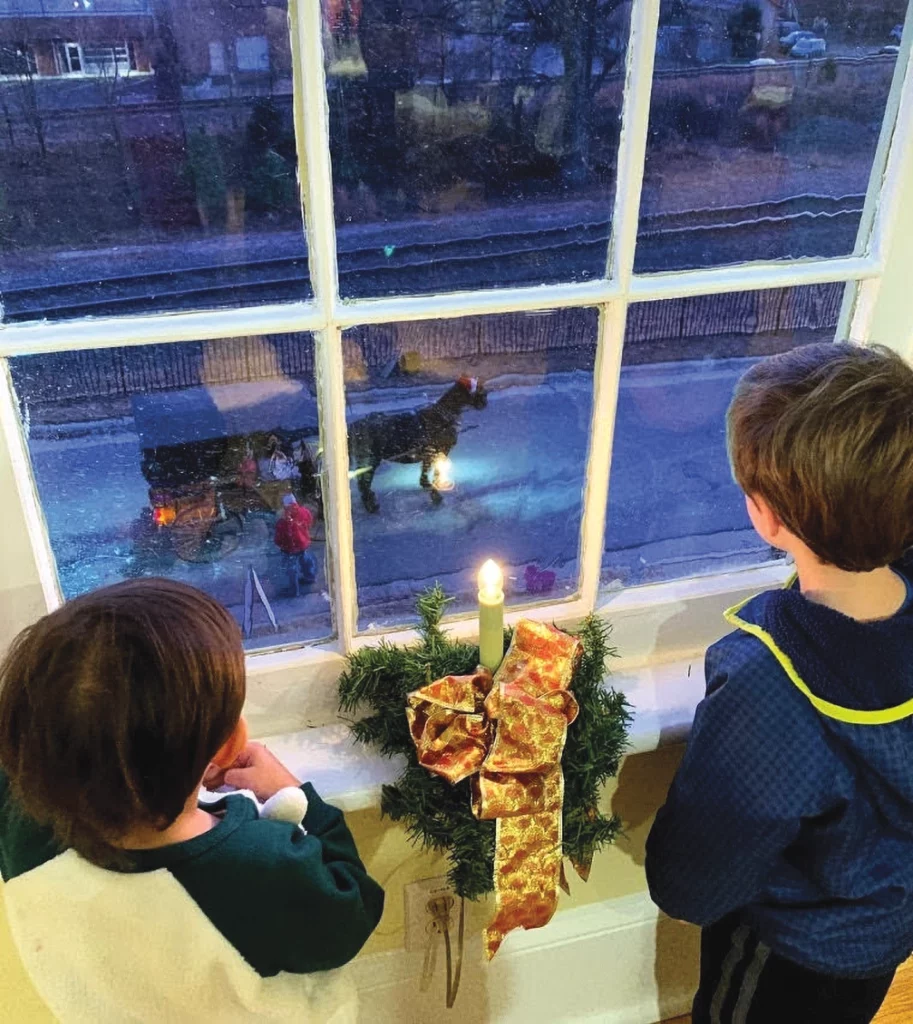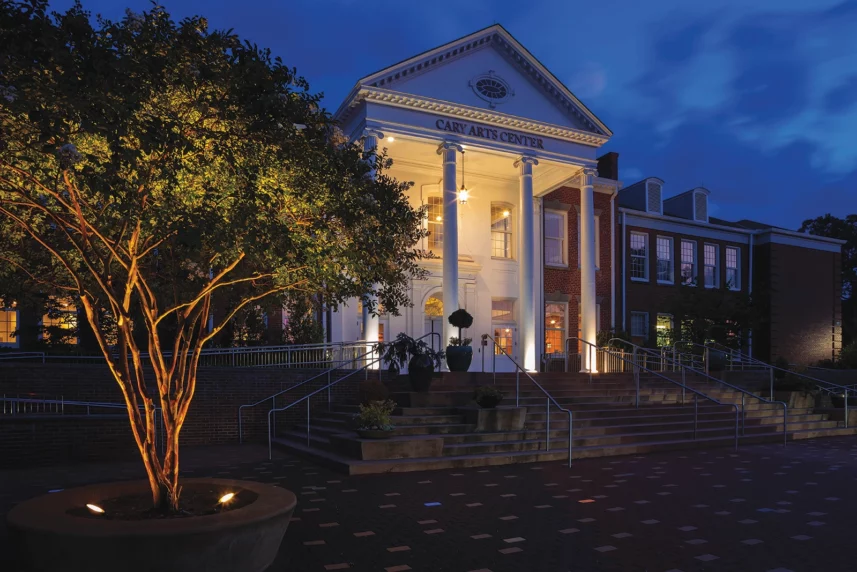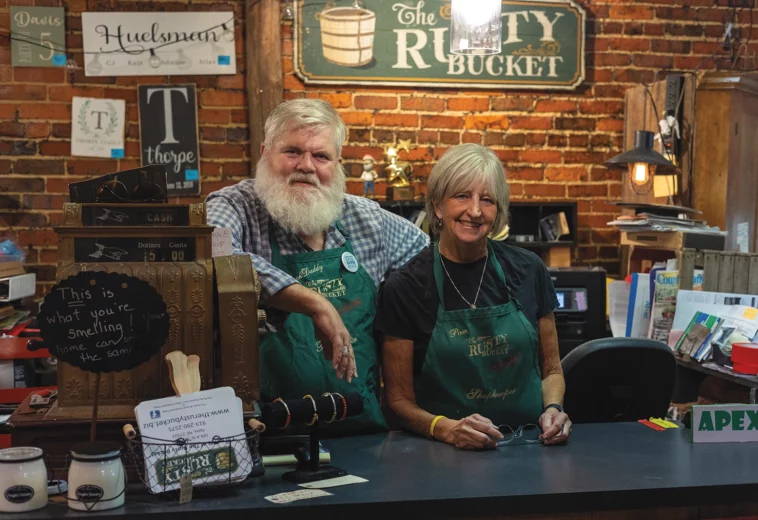Article:
BY DAVE DROSCHAK
If you’ve driven through Cary within the last 12 months, you’ve likely encountered a series of zigzag detours as the trendy downtown transforms right before our very eyes. And while all of the “new” is visually stimulating and draws out-of-towners to one of the fastest growing areas in the nation, it’s easy to overlook the fact that Cary was once a small farming community with a population of 300 where the city’s founder, Frank Page, built a hotel in 1868 that still stands today—in the shadow of all the recent development—as the Page-Walker Arts & History Center.
The restored hotel, which features French Second Empire architectural style and was thought to be a rather ambitious project back in its day, spans three centuries and now serves a museum filled with old photos and memorabilia of Cary’s past. It’s just one of the town’s numerous historic gems.
“People may have moved here from Pennsylvania or Indiana or Colorado and they want to know what’s distinctive about their new community, their new home,” says Kris Carmichael, operations and program supervisor of historical resources for the Town of Cary. “A sense of community is something that people look for. Even though they may live in a brand-new development or a new condo, they still want to know about the roots of their community. So I would say that history gives community its distinctiveness, its connection.”
Carmichael likes that new and old development coexists in Cary. “I just find it interesting that a number of the new developments actually reflect historic names,” she says, noting that the Fenton development was named in honor of former U.S. Rep. Samuel Fenton Cary of Ohio, who Page named the town after because he admired the congressman’s temperance speeches.
“I’ve been approached in the past to do research on certain areas when they’re looking at naming a park or a new road, or something like that, to see if there isn’t some sort of historic precedent to that area or connection for a particular area. How do you think Kildaire Farm Road got its name?”
PRIORITIZING PRESERVATION
While Carmichael has been in her position for 15 years, Gillian White was hired about five years ago to a new post as the town’s historic preservation program manager. One of White’s jobs is to review every single demolition permit that comes into the town for historic significance.
“Even though it could be private property and we have no say over it, we can at least go out and document and take pictures,” White says. “So we’re doing what we can to preserve even the archives that we have of properties, even if we can’t save the property.” White points out that sometimes developers or property owners have no idea of the history behind what is about to be leveled or destroyed—a list that can even include farms or old tobacco sheds.
The town’s Historic Preservation Commission provides White with a yearly list of “priority landmark properties” that often reaches several hundred. “We’ll go through that list and we’ll routinely send out inquiry letters to property owners that we think have historic significance, and it talks about our landmark program and how they can be a part of it—which would offer a protection of their property.”
Properties are deemed historic after 50 years. “So it is always being updated, and every year you’re getting more properties added to the list,” White says. At times, there have been tremendous public-private historic preservation success stories in Cary. The gothic style Ivey-Ellington House was built around 1870 and located at the site of the town’s farmers market, which was moved to a secure location this past winter.
“We owned the house for quite a while, and the inside was never really used for more than storage,” White says. “We just never thought about how we would reuse it. And then, in comes a developer and they want to partner with us and say, ‘Hey, we really want to develop here but we know that this property is really important to you, so we’d like to work with you to have the best outcome possible.’
That’s when we decided to relocate the house just down the street, and now we’re doing a full rehab on it, which will allow the house to actually be utilized instead of it just sitting vacant. So the developer actually got our wheels turning as to how we could use the historic house.”
Recent downtown Cary reuse projects with new businesses that incorporated historic landmarks into their trendy design include Bull City Ciderworks and Cotton House Brewery. “That’s exciting, because it shows that even our developers in the community value historic preservation,” White says. “These developers don’t need to do this, but they want to because they feel like that’s important for the community.”
CREATING COMMUNITY CONNECTIONS
Carmichael is encouraged to see how many new residents visit places like the Page-Walker Arts & History Center and are enthralled with all the history surrounding Cary.
“I think there are times when people do think that Cary is all new, and they’re surprised that we have buildings that go back into, well, the 19th century,” Carmichael says. “For example, we were recently donated a rather substantial collection of arrowheads and projectile points that were all discovered in the process when Cary Parkway and Maynard Road were being extended.”
“People want to know what’s special about Cary. Most people want to feel a connection to the place they live in,” White adds. If you don’t have any uniqueness in your city or town or community. then what’s connecting you to it? It could just be any other city in the world, so having that sense of place is important.”

CHRISTMAS IN CARY
The Town of Cary will host some must-experience events this winter, including a holiday open house the first weekend of December at the Page-Walker Arts & History Center. The 1868 former hotel comes to life in grand Victorian splendor as two dozen volunteers decorate the building with candles and garland for the celebration. The event features carolers dressed in Victorian historical attire, carriage rides, cider and cookies—even a long white bearded Saint Nicholas who hands out candy canes to those who partake in the festivities.
“We really go for that Victorian look and embrace the history and heritage of the Page‑Walker, and people just seem to love it,” says Kristina Carmichael, operations and program supervisor of historical resources for the Town of Cary.
Less than a minute away, the historic Cary Theater will show holiday movies in December, a tradition Carmichael says people “go nuts over” as they relive childhood classics.
After taking in a movie, enjoy a short walk to Academy Street, which is lined with lighted trees. “It’s so beautiful,” says Gillian White, historic preservation manager for the Town of Cary. “When I first came to visit a few years ago, it was during the holidays and I was like ‘I want to live here’ because it was this cute little holiday town.”
BY DAVID DROSCHAK



